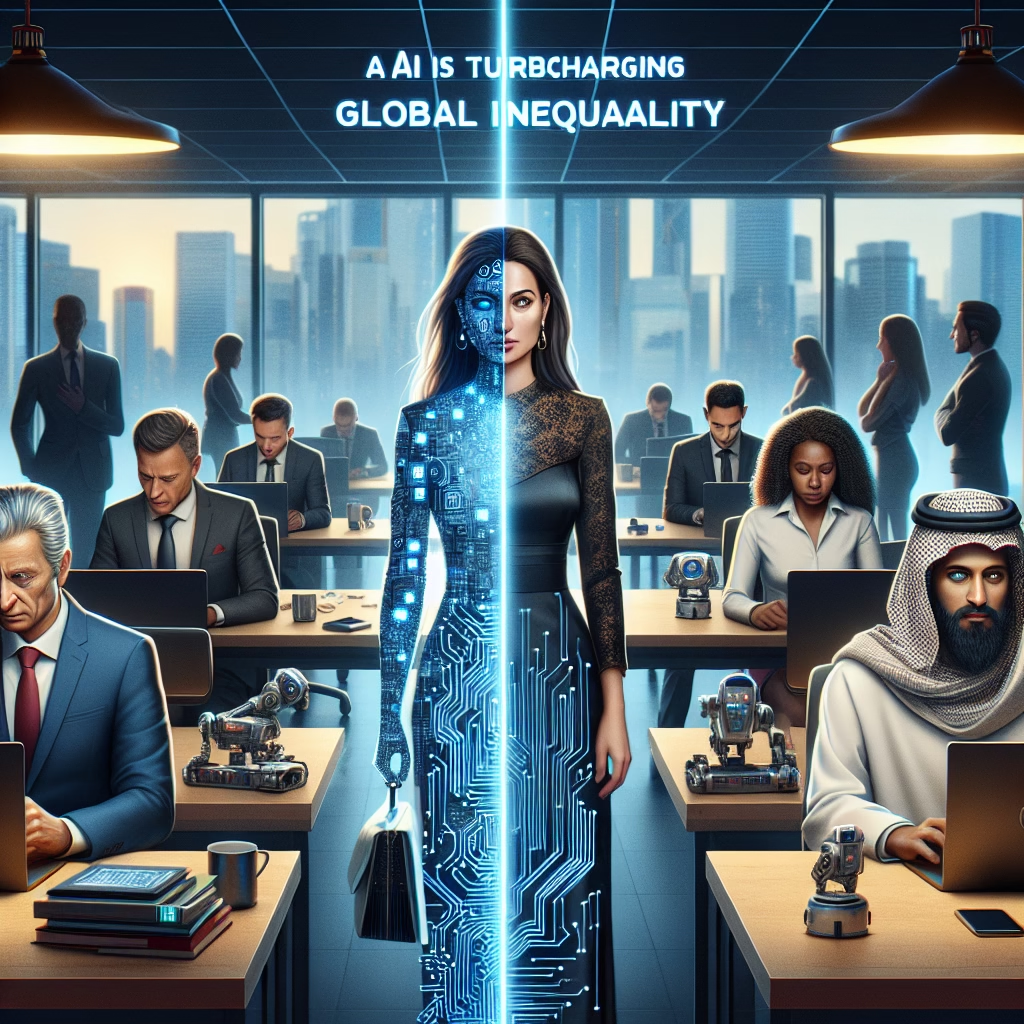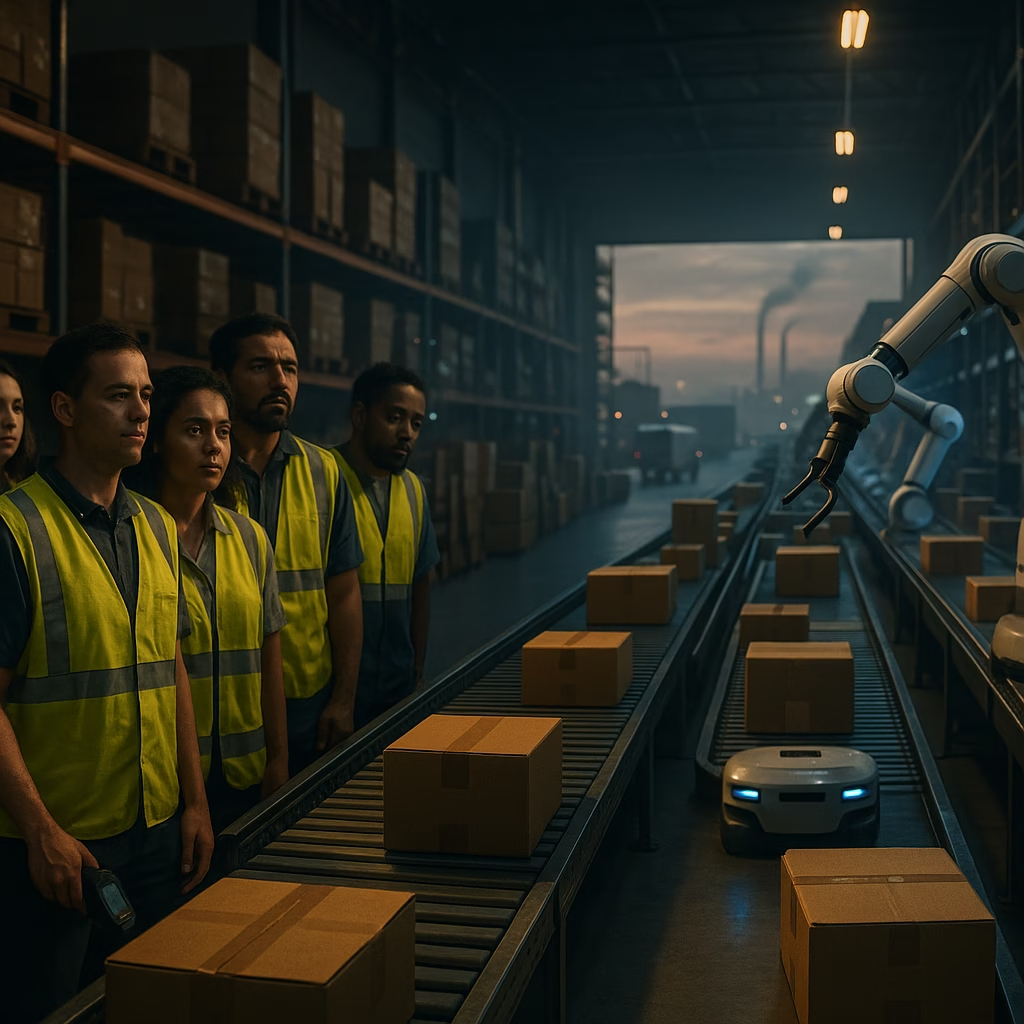How AI is Turbocharging Global Inequality
The New Frontier of Global Disparities
Artificial Intelligence (AI) has been heralded as the dawn of a smarter, more efficient future. From personalized healthcare to self-driving cars, AI is shaping the 21st-century world in unprecedented ways. But there’s another side to the AI revolution that experts and policymakers are increasingly concerned about: its potential to widen the global inequality gap.
AI isn’t emerging in a vacuum. It’s being deployed across a world already fractured by economic, technological, and geopolitical divides. Instead of becoming a great equalizer, AI is threatening to exacerbate these disparities—unevenly distributing wealth, power, and access to knowledge.
Why Is AI Fueling Inequality?
AI’s benefits are largely being reaped by a small group of wealthy countries and elite corporations. Meanwhile, the rest of the world struggles to keep up with the breakneck speed of advancement in data science and computational power. Here are several critical reasons why AI is supercharging inequality:
- Data Access Disparities: AI systems are trained on massive datasets. The companies and countries with access to large amounts of data have a significant advantage in developing more advanced and accurate models.
- Infrastructure Gaps: Developing nations lack the technological infrastructure—such as supercomputing facilities and high-speed internet—required to create or utilize cutting-edge AI tools effectively.
- Talent Concentration: The AI workforce is highly concentrated in tech hubs like Silicon Valley, Beijing, and London. Lower-income countries are often unable to retain their top talent, contributing to a global “brain drain.”
- Commercial Monopolies: A handful of tech giants—Google, Microsoft, Nvidia, OpenAI—dominate the AI market, making it difficult for smaller players, especially from developing economies, to compete.
The AI Divide: A Tale of Two Worlds
As AI development accelerates, it’s creating a bifurcated global tech ecosystem, divided into AI “haves” and “have-nots.”
Developed countries are rapidly integrating AI into their public and private sectors—automating processes, enhancing productivity, and fueling economic growth. Governments invest billions into AI R&D, universities produce specialized talent, and startups have access to venture capital.
In stark contrast, developing countries are being left behind. Limited bandwidth, underfunded educational programs, and inadequate data protection laws hamper their entry into the AI arena. These countries aren’t just missing out on the benefits—some are becoming testing grounds for technologies without sufficient ethical oversight.
Case in Point: AI in Healthcare
AI has revolutionized diagnostics in rich countries—analyzing radiology scans and predicting disease risks with greater accuracy than human doctors. But in low-income countries, healthcare facilities often lack reliable electricity, let alone modern diagnostic tools powered by AI. This disparity leads to a situation where life-saving innovations are only accessible to the wealthy.
Economic Impact: AI and Labor Market Polarization
One of the most direct ways AI amplifies inequality is through its impact on jobs. While AI increases productivity in certain sectors, it also automates middle- and low-skilled labor, impacting workers disproportionately in less developed economies.
- Job Displacement: From customer service chatbots to warehouse robots, AI systems are replacing tasks traditionally done by humans, leading to widespread job displacement, especially in economies reliant on basic service or manufacturing jobs.
- Wage Suppression: The demand for AI-related skills has dramatically driven up wages for highly skilled workers while depressed wages in low-skill sectors.
- Inequitable Growth: Countries with strong AI ecosystems are seeing economic booms, while others experience stagnation—or worse, an economic decline as they fall further behind.
Educational Gaps are Becoming Chasms
The digital literacy needed to work alongside AI tools is further entrenching inequality. Wealthier nations are implementing AI-focused curricula in schools, equipping the next generation with the tools to thrive. Meanwhile, in underfunded education systems, basic computer literacy is still a challenge.
This educational disparity affects long-term economic competitiveness. Countries unable to nurture homegrown AI talent will remain dependent on foreign expertise and technologies, limiting their sovereignty in shaping their own digital futures.
AI Colonialism: An Emerging Concern
Some experts are warning of a new form of digital imperialism, often referred to as AI colonialism. This phenomenon occurs when powerful nations and companies export AI systems to less developed regions while maintaining control over the technology, data, and profits.
For example, surveillance tools using facial recognition software have been deployed in African and Southeast Asian cities, often with limited oversight or consent from the local population. These tools collect and process immense amounts of data that are then analyzed by foreign companies, perpetuating a cycle of data extraction and economic exploitation.
Ethical Risks and Governance Gaps
Unfortunately, global governance of AI is lagging behind innovation. While some countries are forming regulatory frameworks to ensure ethical AI use, many developing nations lack the institutional capacity to do the same. This allows companies to deploy AI in ways that may undermine privacy, civil liberties, and democratic norms in vulnerable nations.
What Needs to Change?
Bridging the AI inequality chasm will require concerted global effort. Here’s what experts believe can make a difference:
- International Cooperation: Encourage equitable sharing of AI technologies and research findings across borders. Global organizations like the UN and World Bank must play leadership roles in this space.
- Investment in Infrastructure: Develop robust digital and research infrastructure in underserved regions—fiber optics, computing facilities, and AI labs.
- Skilling the Workforce: Launch bold education reform policies to integrate AI literacy and advanced digital skills into school and university curricula globally.
- Regulatory Harmonization: Create global regulatory standards that prevent exploitation and misuse of AI technologies in vulnerable regions.
Redistributing AI Power
One potential solution involves democratizing AI itself. Open-source AI frameworks and decentralization efforts present an opportunity to make powerful tools accessible to more people and nations. By reducing the monopolistic grip of mega-corporations, these initiatives could help level the playing field.
Additionally, fostering AI ecosystems in the Global South will be crucial—supporting local developers, researchers, and ethical frameworks built with cultural and regional contexts in mind.
Conclusion: Choosing a Shared Future
AI has the power to transform the world for good—but only if its benefits are shared equitably. At present, it’s steering us toward a future where the rich get smarter, richer, and more powerful, while billions are left behind in a data-poor, automation-disrupted limbo.
If we want to harness AI to solve humanity’s greatest challenges—from healthcare to climate change—then inclusion must be at the core of our strategies. We are at a critical juncture. The coming years will determine whether AI becomes a bridge to a more equitable future—or a barrier that reinforces long-standing global divides.
The choice is ours.< lang="en">







Leave a Reply